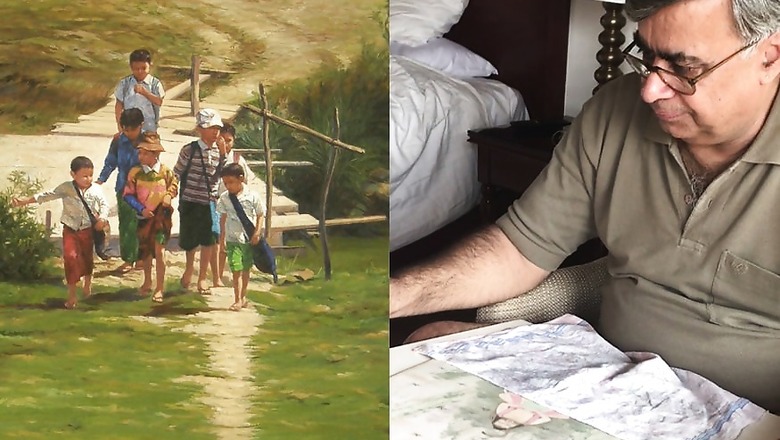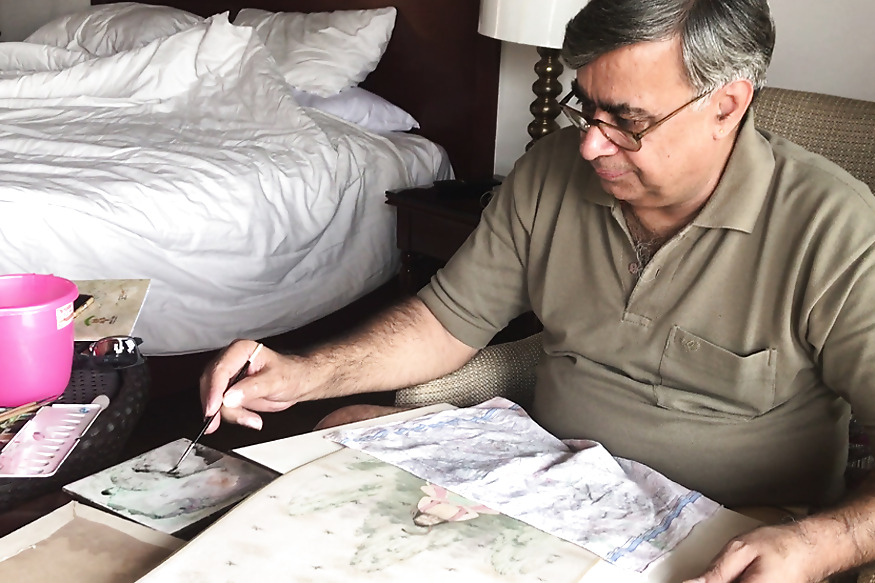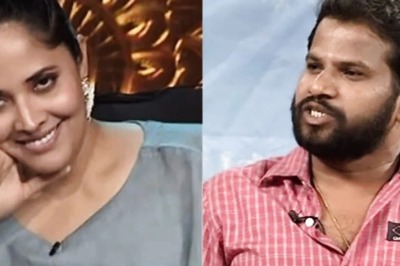
views
Away from the hustle bustle of the main city of Udaipur, Ministry of External Affairs, Government of India in collaboration with Seher, has organised a 9-day-long camp to mark the 25th anniversary of ASEAN-India Dialogue Relations.
The ongoing artists’ camp sees the presence of gifted artists from Indonesia, Philippines, Malaysia, Thailand, Cambodia, Singapore, Brunei, Lao PDR, Vietnam and Myanmar besides India. Considering that among the various businesses in India, it’s perhaps the art sector which goes unnoticed for most time of the year, it has become a topic of interest as to how artists’ perceive the market fluctuations as opposed to the general public.
In an interaction with News18.com, Sanjeev Bhargava, Founder Director of Seher, says that while this particular camp is only intended to join people’s hearts and to create a sense of harmony, the market, in general, has witnessed a dip.
“The selection of artists here has got nothing to do with their market values and in fact, we are not concerned with the market for art. But keeping this camp aside, the market has dipped a lot. 2008, 2009 and 2010 were a different deal altogether when the market was on a huge upswing. At this moment, however, the things are really down and I really hope they pick up.”

“A whole lot of artists who are doing some genuinely good work are now suffering and, on top of that, the GST that has come on painters will also affect them. This is my humble request that if there’s no GST on local musicians, dancers and singers then why should painters be treated differently,” he adds.
Laishram Meena Devi, hailing from Manipur, says that even though she isn’t sure of the reason, the market has witnessed a downfall in the past two years. “I can’t say exactly but if compared to two years back and now, the market has come down. It’s maybe because of the Government or something. I don’t know the exact reason.”
Kalam Patva, a traditional painter hailing from a town 200 kms away from Kolkata, reflects on the time when he started painting and believes that things have improved from then. “I think nowadays it’s a bit good but when I started my painting 20-30 years ago, the market wasn’t so good. Now people are collecting business and making money. It’s a good time for artworks.”

Another artist Tanmoy Samanta points out that the Indian art market lacks coherence and balance and says that it’s only now that it’s garnering international attention.
“I’m not an expert on these as I don’t have the pulse of the market but as an artist, I feel it is very diverse. Everybody knows that the market but on the whole, it hasn’t been much organised. There’s no balance.. some are very big and some are still struggling – even though they’re equally talented. So, it’s not very organised and structured yet. But it has a lot of potential and it’s getting a lot of international attention now.”
A Bikaner-based veteran artist, Mahaveer Swami, seems positive and says, “Today, the Indian market is good. The public, these days, appreciates novel ideas and if you’re creating something new, they’ll like it.”
Considering that artists from all across the world are living and creating art together, it’s also important to understand their idea of Indian art and market as opposed to their homelands.

Thailand’s Kurae Naphaphong guesses that the market might be similar to one existing in his country. “I don’t know much about the art market honestly. But it’s maybe something same like Thailand because India is such a big country. There are so many kinds of arts in India and my country loves Indian art. I always thought that India is the birthplace of art for Asia and for world maybe.”
In Singapore, as Lei Cai Xiang tells us, the market is still very young when it comes to art and it’s only getting better and exciting. “The Government has been putting a lot of efforts in developing art in all forms. It’s getting more and more exciting.”
While he admits that he doesn’t understand the pulse of the Indian market, he says, “So far I’ve seen that India is a country with a very deep culture and traditions. And I think that shows a lot about the kind of art India is creating.”

Dennis Mallares Gonzales of Philippines, too, admits that he doesn’t have much idea about the market here as he doesn’t base his thinking on what he googles. But from what he has learnt and seen, he says there are a lot of good artists in India.
Malaysia-based Mohd. Shahrul Hisham B. Ahmad Tarmizi seems hopeful and says, “I think nowadays everybody has open minds and they’ve accepted all kinds of works. It’s amazing that there are a lot of Indian artists in Malaysia and I love working with them. Actually, I feel a strong connection between Malaysia and India.”



















Comments
0 comment